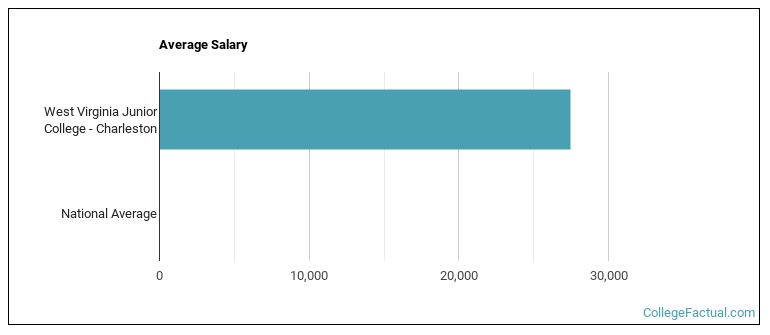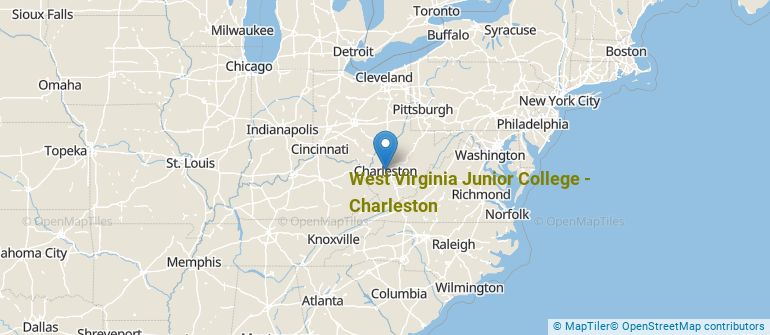 by our College Data Analytics Team
by our College Data Analytics TeamExplore the best ranked schools for the programs you are most interested in.
WVJC Charleston is also ranked #25 out of 25 schools in West Virginia.
WVJC Charleston was not ranked in College Factual's Best Overall Colleges report this year. This may be because not enough data was available.
See all of the rankings for West Virginia Junior College - Charleston.
As long as you meet basic requirements, you should not have any trouble getting into West Virginia Junior College - Charleston since the school has an open admissions policy. Still, be sure to submit any requested materials and that your application is completed in full.
The student to faculty ratio at West Virginia Junior College - Charleston is about average at 13 to 1. This ratio is often used to gauge how many students might be in an average class and how much time professors will have to spend with their students on an individual level. The national average for this metric is 15 to 1.
The freshmen retention rate tells us what percentage of first-year, full-time students choose to continue on to their sophomore year at a particular school. The rate at West Virginia Junior College - Charleston is 67%, which is about average when compared to the national rate of 68%.
Find out more about the retention and graduation rates at West Virginia Junior College - Charleston.
During the 2017-2018 academic year, there were 218 full-time undergraduates at WVJC Charleston.
| $0-30 K | $30K-48K | $48-75 | $75-110K | $110K + |
|---|---|---|---|---|
| $13,634 | $14,601 | $13,943 | $12,960 | $22,063 |
The net price is calculated by adding tuition, room, board and other costs and subtracting financial aid.Note that the net price is typically less than the published for a school. For more information on the sticker price of WVJC Charleston, see our tuition and fees and room and board pages.
It's not uncommon for college students to take out loans to pay for school. In fact, almost 66% of students nationwide depend at least partially on loans. At WVJC Charleston, approximately 90% of students took out student loans averaging $5,257 a year. That adds up to $21,028 over four years for those students.
Get more details about paying for West Virginia Junior College - Charleston.

See which majors at West Virginia Junior College - Charleston make the most money.
Get more details about the location of West Virginia Junior College - Charleston.

Contact details for WVJC Charleston are given below.
| Contact Details | |
|---|---|
| Address: | 5514 Big Tyler Road Suite 200, Cross Lanes, WV 25313-1304 |
| Phone: | 304-769-0011 |
| Website: | www.wvjc.edu/ |
| Most Popular Majors | Bachelor’s Degrees | Average Salary of Graduates |
|---|---|---|
| Nursing | 35 | NA |
| Allied Health & Medical Assisting Services | 24 | NA |
| Dental Support Services | 12 | NA |
| Health & Medical Administrative Services | 9 | NA |
| General Business/Commerce | 4 | NA |
| Information Technology | 4 | NA |
| Business Support & Assistant Services | 0 | NA |
Online learning is becoming popular at even the oldest colleges and universities in the United States. Not only are online classes great for returning adults with busy schedules, they are also frequented by a growing number of traditional students.
In 2022-2023, 206 students took at least one online class at West Virginia Junior College - Charleston. This is an increase from the 90 students who took online classes the previous year.
| Year | Took at Least One Online Class | Took All Classes Online |
|---|---|---|
| 2022-2023 | 206 | 48 |
| 2021-2022 | 90 | 0 |
| 2020-2021 | 188 | 0 |
| 2018-2019 | 62 | 0 |
Learn more about online learning at West Virginia Junior College - Charleston.
Footnotes
*The racial-ethnic minorities count is calculated by taking the total number of students and subtracting white students, international students, and students whose race/ethnicity was unknown. This number is then divided by the total number of students at the school to obtain the racial-ethnic minorities percentage.
References
More about our data sources and methodologies.